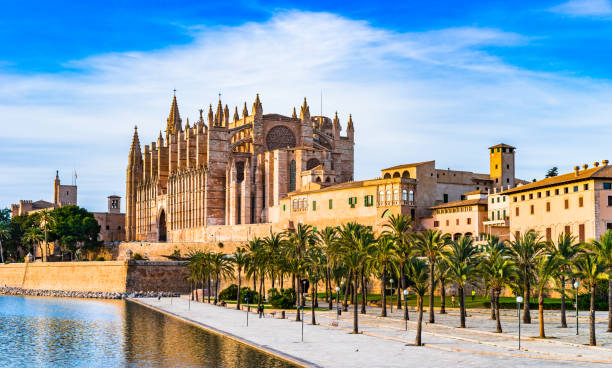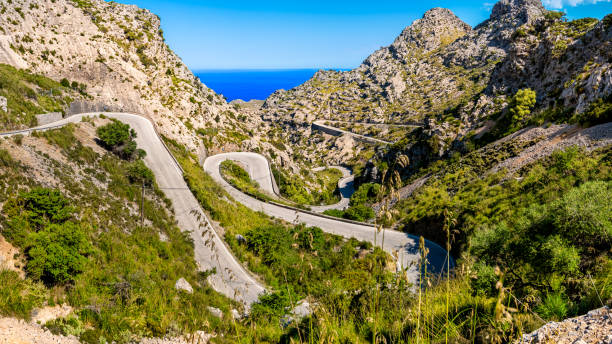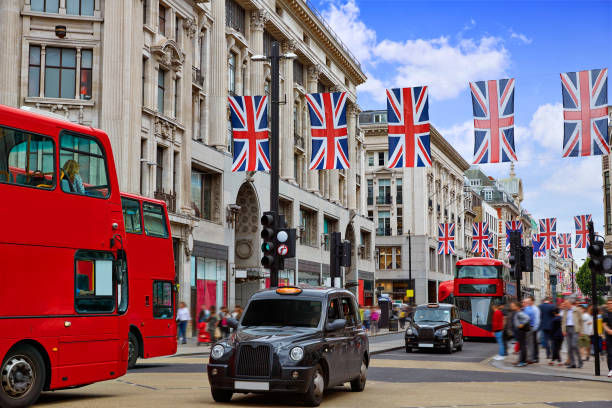Europe Summer in Mallorca, Spain: Travel Guide
- joselagran
- Mar 9, 2024
- 4 min read
Updated: Mar 10, 2024
European summers have never looked more enticing than from the incredible islands of Spain. With some of the bluest waters, yummiest foods, and all the Spanish flair you could ever want, these islands need to be on your Spanish bucket list. Whether you’re looking to party, relax, or explore, these islands have something for everyone.
Why the Balearic Islands?
The Balearic Islands, with Mallorca, Ibiza, and Menorca at their heart, boast a magnetic allure that caters to every traveller's desires. Mallorca's rich history and cultural diversity, Ibiza's world-renowned nightlife, and Menorca's tranquil beauty create a perfect trifecta for a memorable summer getaway. This post aims to unravel the charm of these islands, offering a holiday adventure that seamlessly weaves together relaxation, adventure, and cultural immersion.
Navigating around Spain becomes a breeze when you grasp some Spanish basics.
Mallorca: The Diverse Island
Mallorca is part of the Balearic Islands, an autonomous community of Spain. It is situated to the east of the Iberian Peninsula in the Mediterranean Sea. With an area of approximately 3,640 square kilometres, Mallorca is the largest of the Balearic Islands.
How to Get To Mallorca

By Plane:
Direct Flights: Flying is the fastest way to reach Mallorca. Direct flights depart from major Spanish cities like Madrid, Barcelona, and Valencia. The flight duration ranges from 1 to 1.5 hours.
Palma de Mallorca Airport: Arrive at Palma de Mallorca airport, which connects to various European cities.
By Ferry:
From Denia: Take a ferry from Denia (mainland Spain) to Mallorca. The ferry ride takes about 5 hours.
From Valencia: Another ferry option departs from Valencia and takes approximately 8-9 hours.
Barcelona: Ferries also run from Barcelona’s port, with a longer journey of 7.5 hours.
Where to Stay
Here's a list of top-reviewed hotels in Mallorca, categorized by luxury, mid-range, and budget:
Luxury Hotels:
Palacio Can Marques: A former palace turned five-star hotel in Palma, offering superb service and a wellness zone.
Carrossa Hotel Spa Villas: Set in a private estate with panoramic mountain and sea views, featuring two gastronomic restaurants. Click here to check out hotel options
Mid-Range Hotels:
El Llorenç Parc de la Mar: A five-star boutique hotel facing the sea, with exquisite cuisine and a magnificent spa.
Nakar Hotel: A four-star tech-savvy hotel on Avenida Jaume III in Palma. Click here to check out hotel options
Budget Friendly Hotels:
Petit Hotel Rural Son Jordá: A three-star historic retreat in the village of Ruberts, with amenities like a swimming pool and spa
What to Do - Activities and Attractions
Coastline: Mallorca boasts a diverse coastline with picturesque coves, sandy beaches, and rugged cliffs. Notable beaches include Cala d'Or, Playa de Muro, and Es Trenc.
Serra de Tramuntana: The island is home to the Serra de Tramuntana mountain range, a UNESCO World Heritage site known for its dramatic landscapes, charming villages, and excellent hiking opportunities. The picturesque town of Valldemossa and the scenic Sa Calobra are must-visit spots.
Palma de Mallorca: The capital city, Palma, is a vibrant hub that combines historic architecture with a modern cosmopolitan atmosphere. The Palma Cathedral (La Seu) and the Royal Palace of La Almudaina are prominent landmarks.
Palma Cathedral (La Seu): A masterpiece of Gothic architecture, Palma Cathedral is an iconic landmark dominating the skyline of Palma de Mallorca. Visitors can explore its impressive interior, rose windows, and panoramic views from its terrace.
Caves of Drach (Cuevas del Drach): Located in Porto Cristo, these enchanting caves feature stunning stalactite formations, an underground lake (Lake Martel), and captivating light shows. Visitors can enjoy classical music concerts on boat rides across the lake.
Valldemossa: Nestled in the Serra de Tramuntana, Valldemossa is a charming village known for its cobbled streets, historic architecture, and the Real Cartuja, a Carthusian monastery where Frederic Chopin and George Sand once stayed.
Top Beaches to Explore:
Es Trenc: South Mallorca's Es Trenc is famed for its long, pristine white sands and crystal-clear turquoise waters, nestled within a natural and unspoiled setting.
Cala Comtesa: Located in southwest Mallorca near Illetas, Cala Comtesa charms visitors with its small, golden cove and a laid-back atmosphere.
Cala Llombards: Southeast Mallorca's Cala Llombards offers a picturesque escape with its small, clear-watered cove embraced by cliffs.
Cala Agulla: Northeast Mallorca's Blue Flag beach, Cala Agulla, captivates with its natural surroundings and popularity among locals and tourists alike.
Cala Varques: Accessible by a short hike, Cala Varques in east Mallorca is a secluded gem with pristine waters, surrounded by cliffs and pine trees.
When to Visit
The best time to explore Mallorca depends on your preferences:
Spring (April to June): Ideal for avid cyclists tackling winding routes in the Serra de Tramuntana.
Summer (July to September): Sunseekers can enjoy pine-backed coves and sweeping bays.
Autumn (October to November): Pleasant weather for exploring villages and scenic drives across the island.
Cultural Events: Mallorca hosts a variety of cultural events, including the vibrant Festes de Sant Sebastià in January, the Dia de les Illes Balears celebration in March, and the visually stunning Corpus Christi in June. The island also welcomes the Mallorca Smooth Jazz Festival in April, Sant Jordi's celebration of literature and love in April, and the Night of Art (Nit de l'Art) in September. Throughout the year, religious processions, music festivals, and traditional fairs contribute to Mallorca's rich cultural tapestry, providing both locals and visitors with opportunities to immerse themselves in the island's heritage and artistic expressions.
Pack your bags and discover the laid-back charm, natural beauty, and endless possibilities that Mallorca has to offer.
















Comments